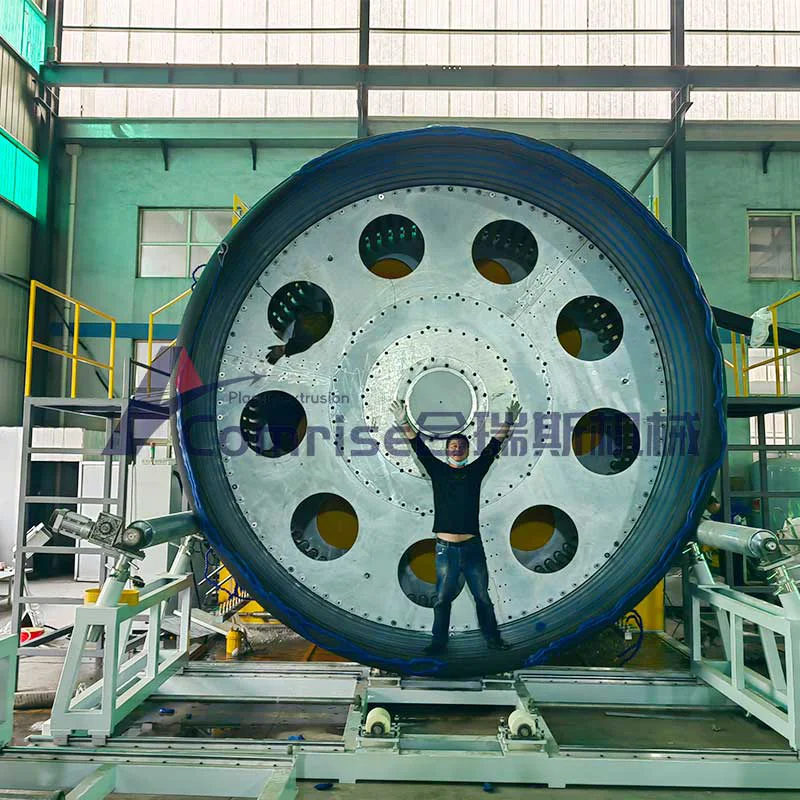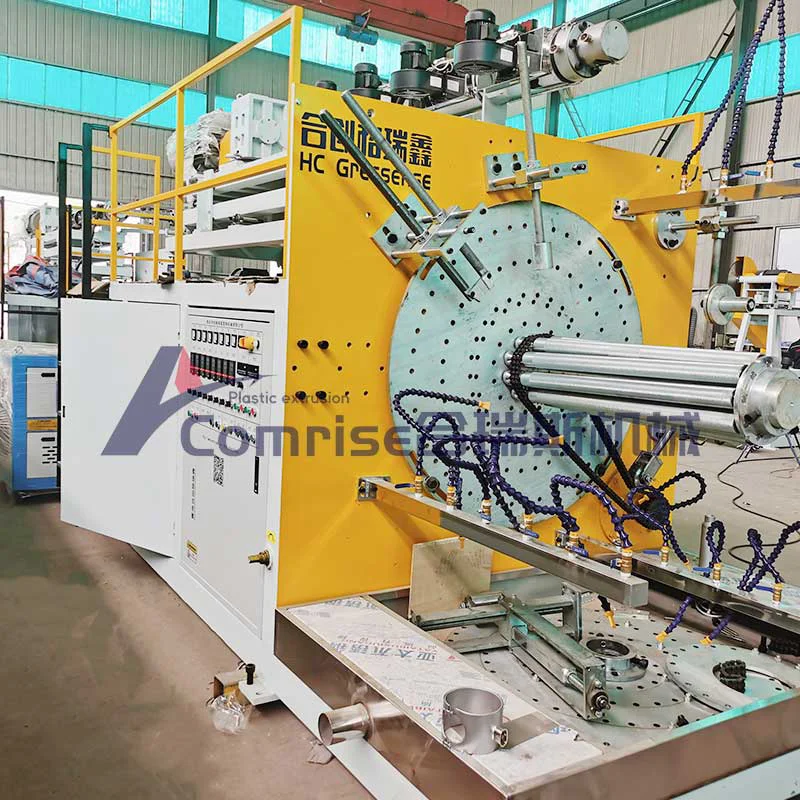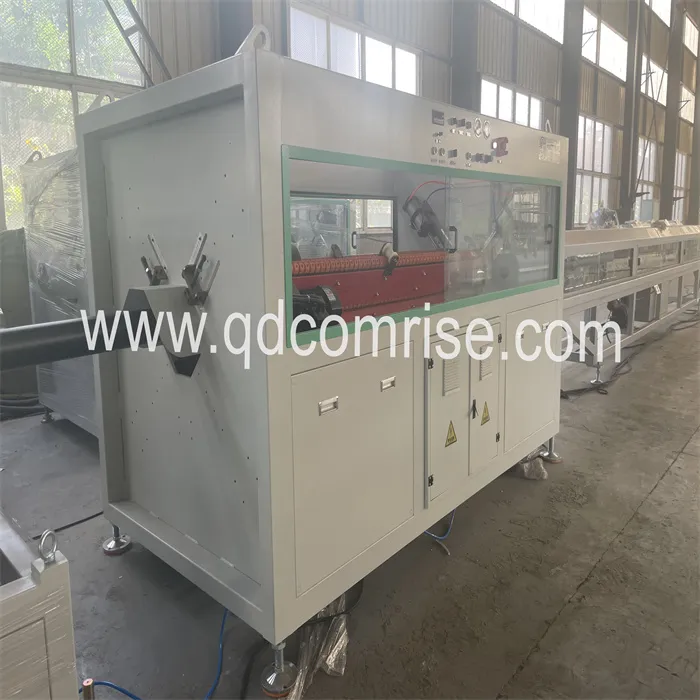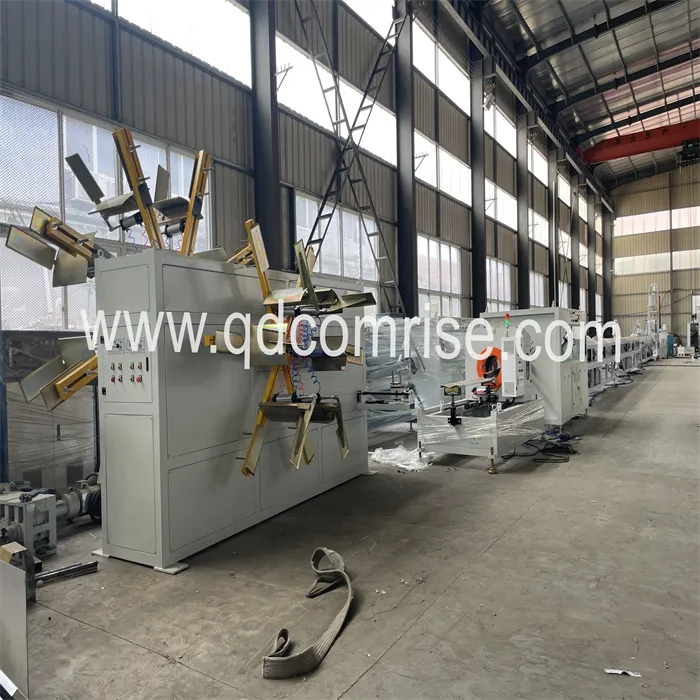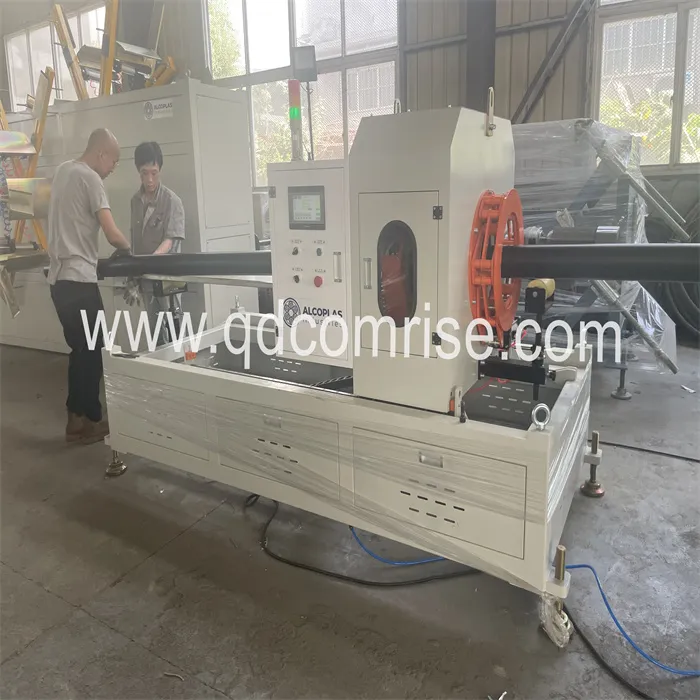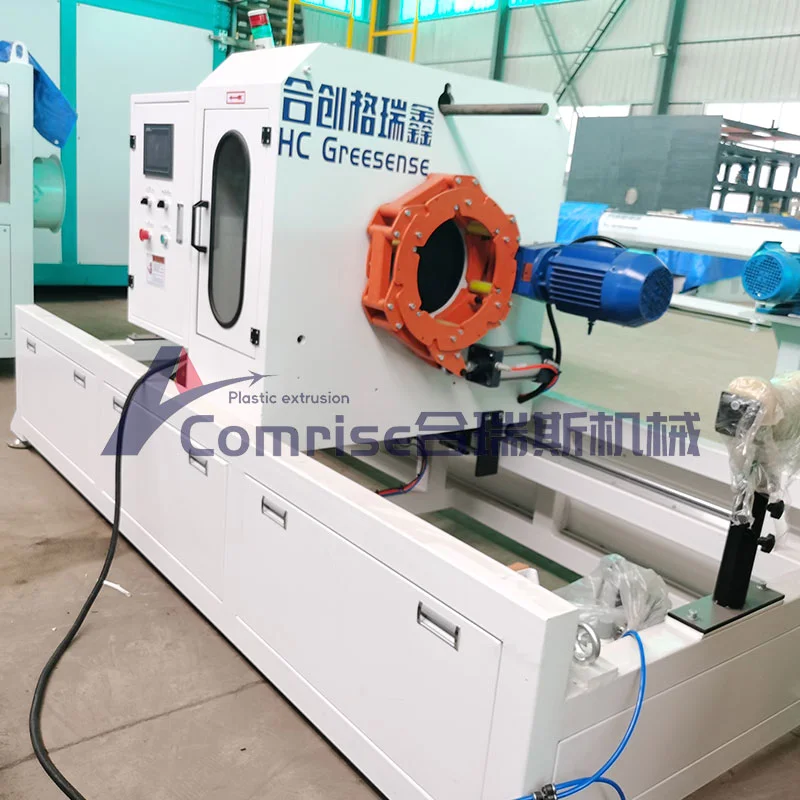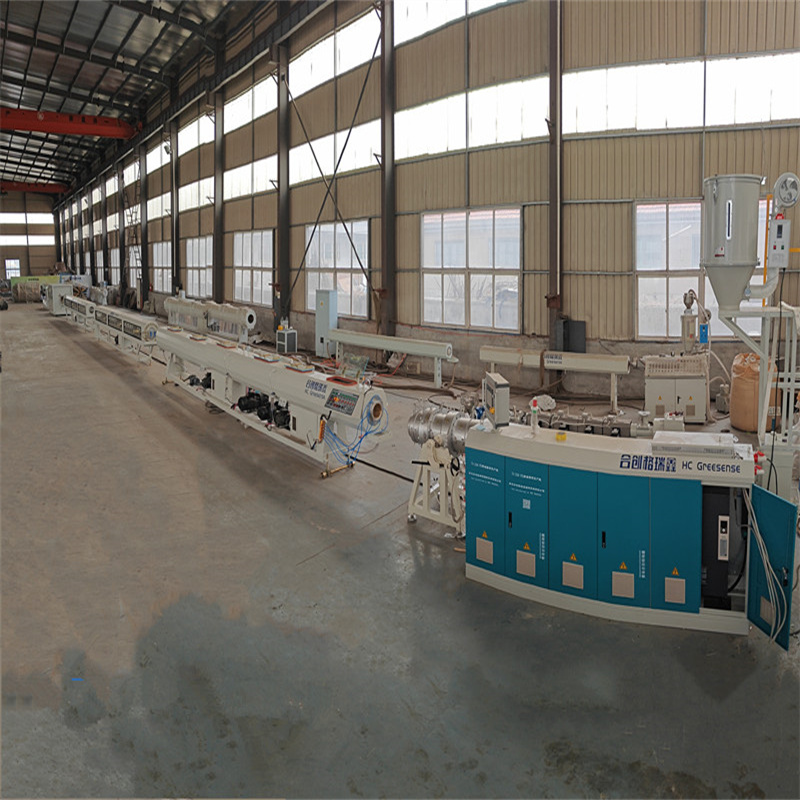PPR Pipe Machine
Send Inquiry
1. Key Components of a PPR Pipe Machine Production Line
Extruder: Heats and extrudes PPR material into the desired shape; it is the core component of the production line.
Die: Selected based on the required pipe diameter and wall thickness.
Vacuum Calibration Tank: Cools and shapes the extruded pipe to ensure dimensional accuracy and surface smoothness.
Cooling Tank: Further cools the pipe to ensure complete solidification.
Haul-off Unit: Pulls the pipe to ensure continuous production.
Cutter: Automatically cuts the pipe to the specified length.
Stacker: Stores and organizes the finished pipes.
2. Single-Layer vs. Three-Layer PPR Pipes
Single-Layer PPR Pipes: Made from a single layer of PPR material, with a simple structure. Suitable for general cold and hot water systems.
Three-Layer PPR Pipes: Consist of an inner and outer layer of PPR material with a middle layer of adhesive or reinforcement material. The three-layer structure enhances pressure resistance, impact resistance, and impermeability, making it suitable for more demanding applications.
3. Common Specifications
16-63mm PPR Pipe Machine: Suitable for cold and hot water systems in residential and small commercial projects.
20-110mm PPR Pipe Machine: Suitable for medium and large-scale projects, such as cold and hot water systems and heating systems.
GET A QUOTATION NOW
4. Factors to Consider When Choosing a PPR Pipe Machine
Production Requirements: Select the appropriate pipe diameter range and structure (single-layer or three-layer) based on market demand.
Production Efficiency: Consider the level of automation and production speed of the machine.
Equipment Quality: Choose reliable suppliers to ensure equipment quality and after-sales service.
Energy Consumption and Environmental Impact: Opt for energy-efficient and environmentally friendly equipment to reduce production costs and environmental impact.
5. Applications
Building Water Supply and Drainage Systems**: PPR pipes are widely used in cold and hot water supply systems in buildings.
Heating Systems: PPR pipes are suitable for underfloor heating and radiator systems due to their excellent heat resistance.
Industrial Pipelines: PPR pipes can also be used for fluid transportation in industrial applications.
6. Market Trends
Eco-Friendly Materials: Increasing demand for environmentally friendly PPR pipes due to growing environmental awareness.
High-Performance Pipes: Three-layer PPR pipes are becoming mainstream due to their superior performance.
Automated Production: Highly automated PPR pipe production lines are increasingly favored for their ability to improve production efficiency and product quality.




















































